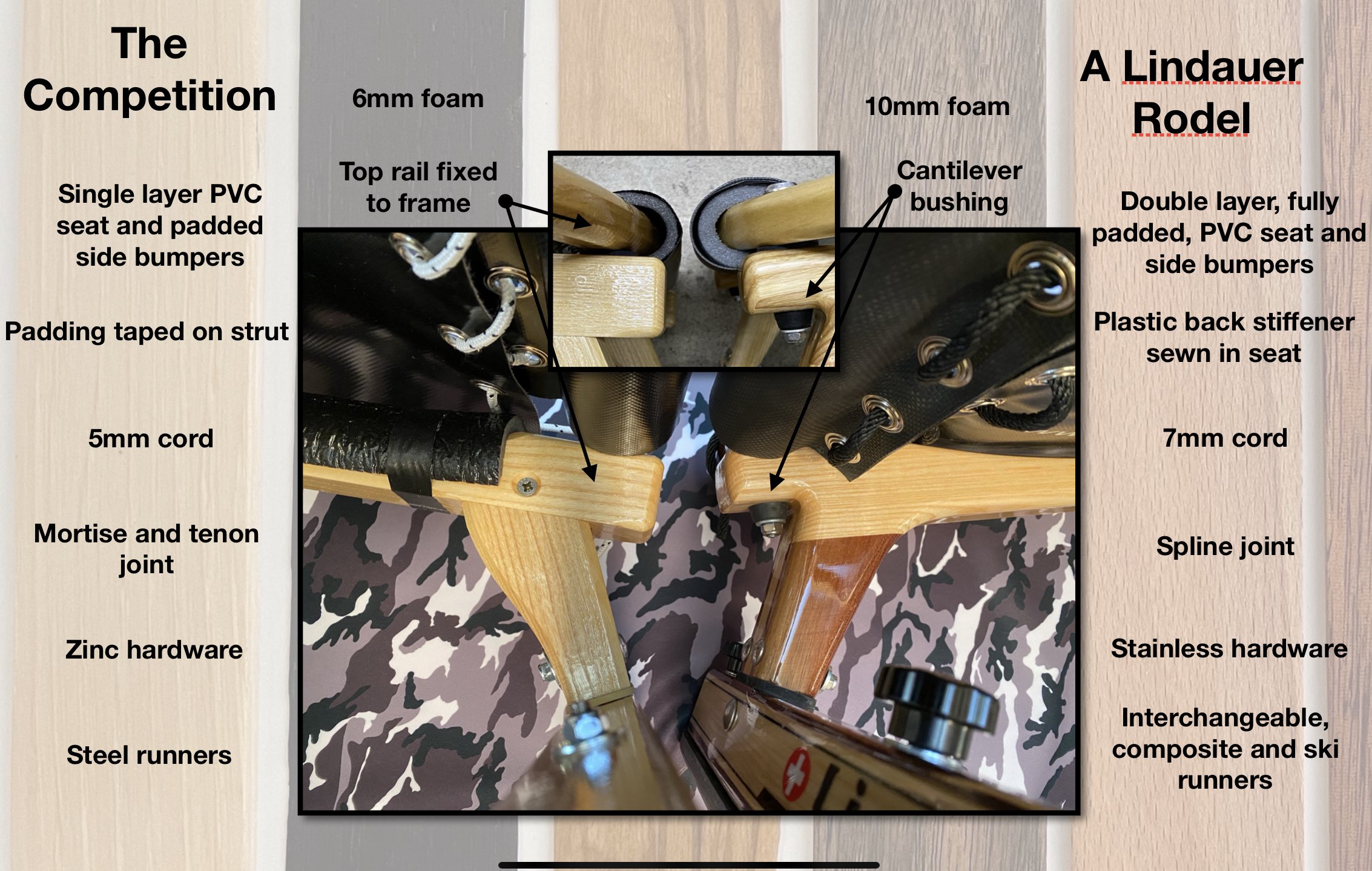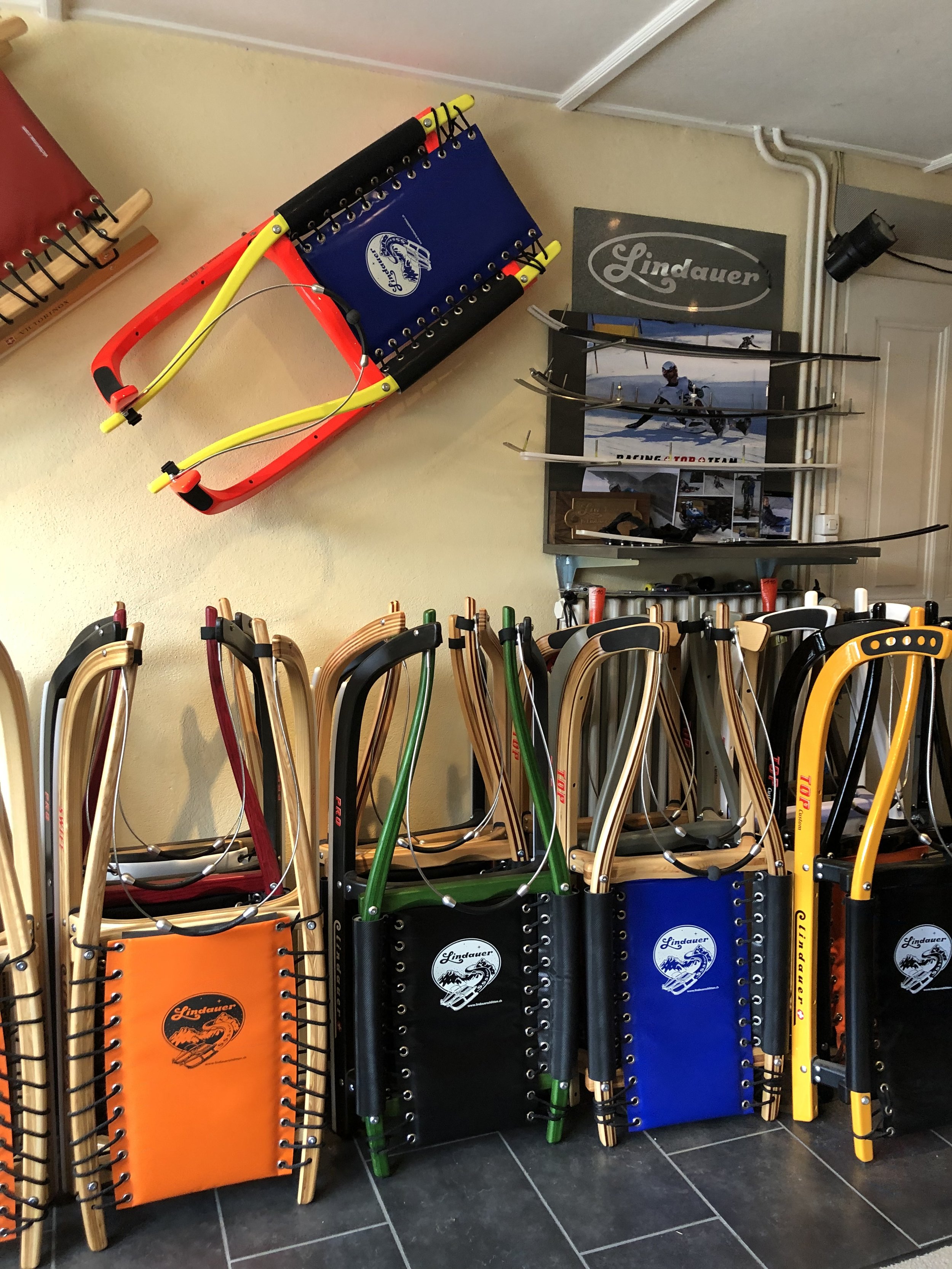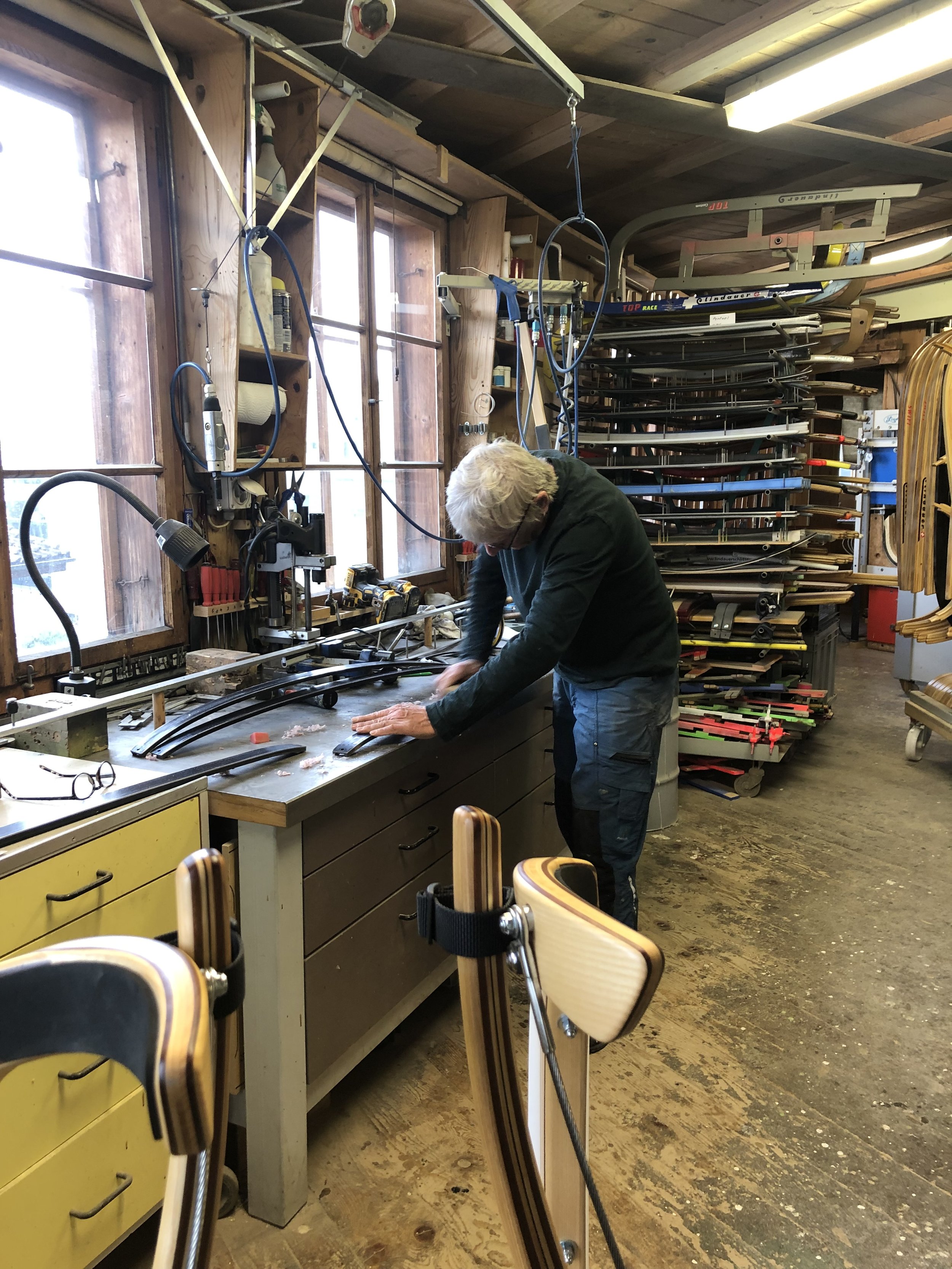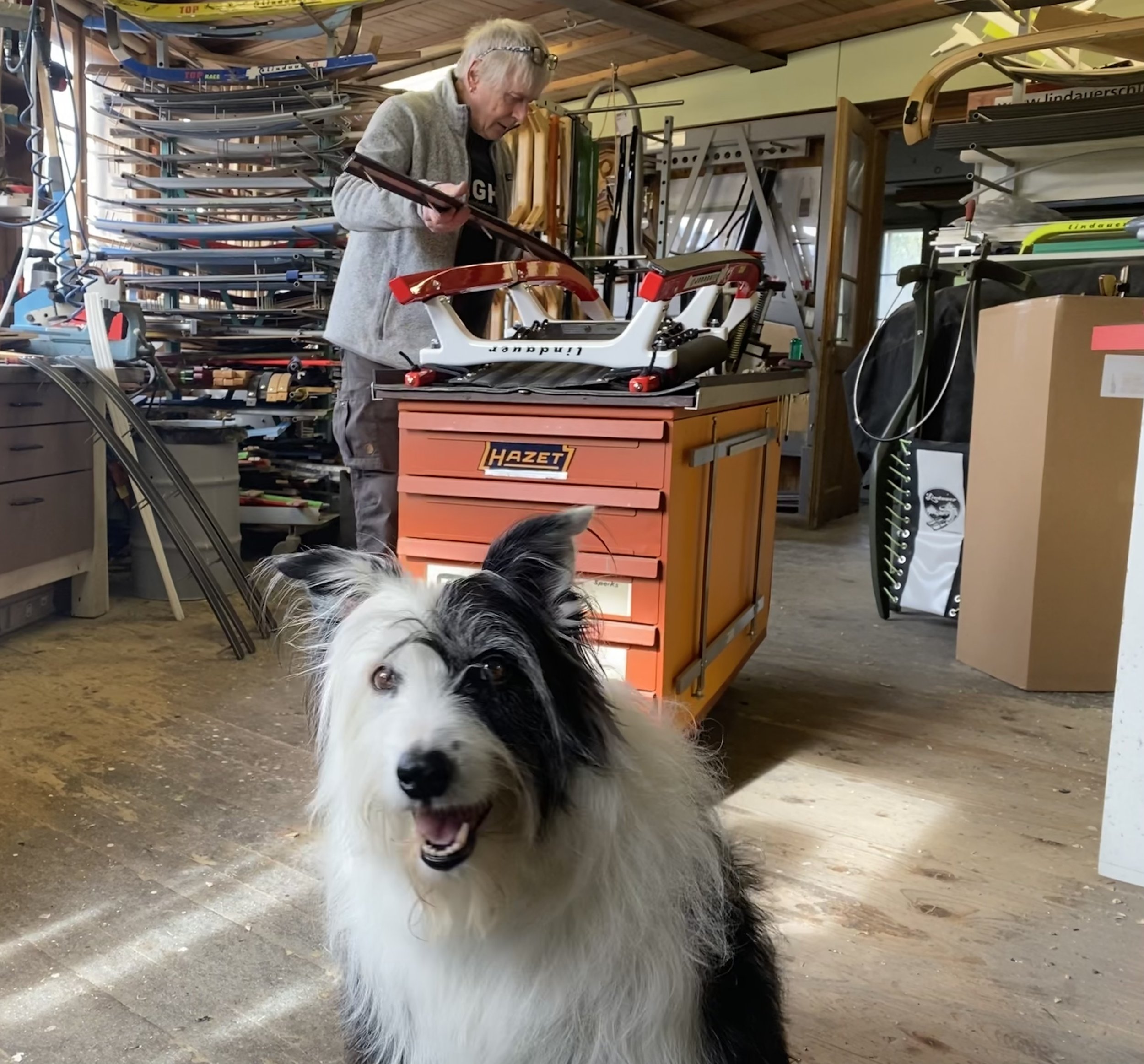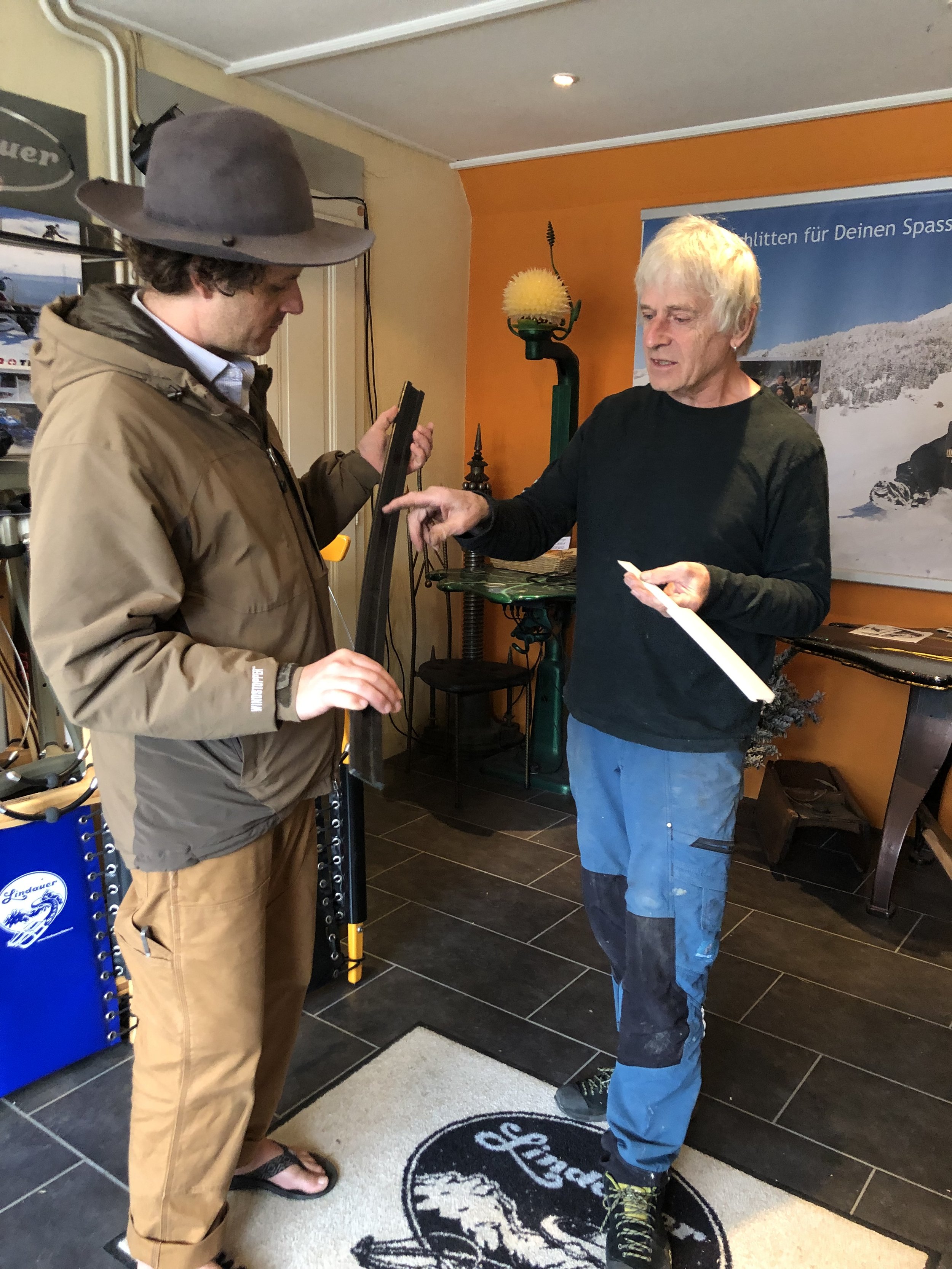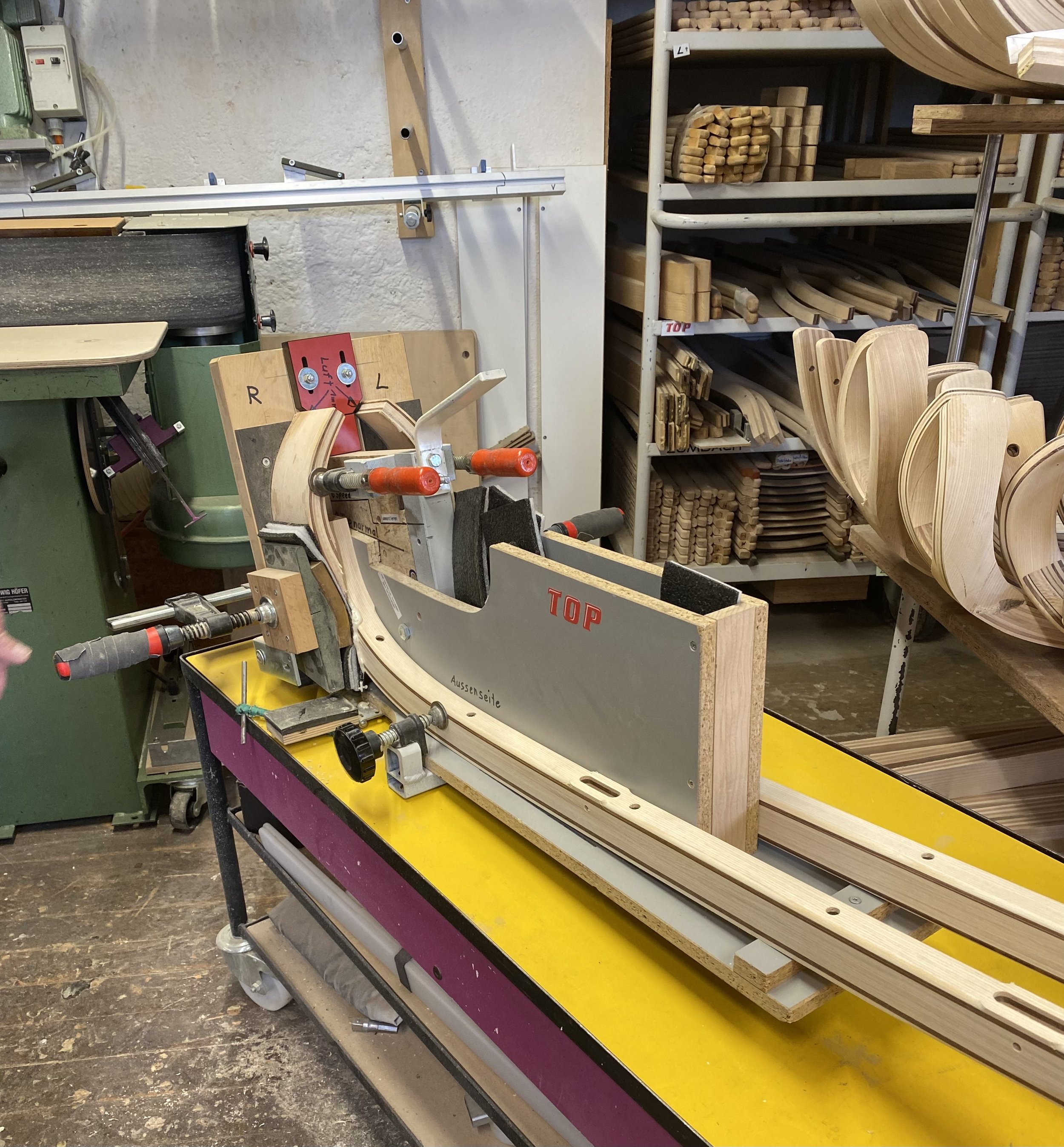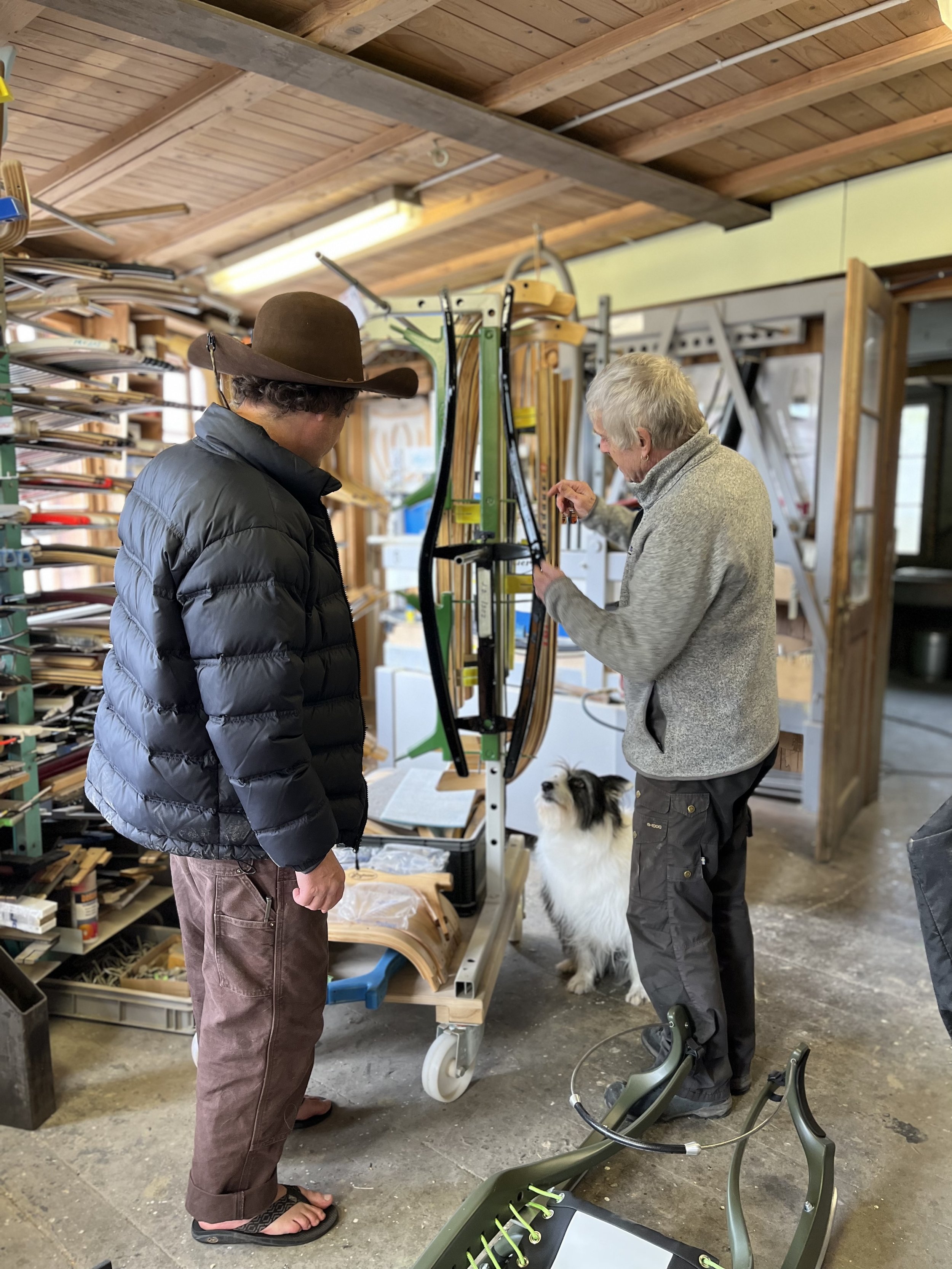Jo Lindauer’s world is a bit surreal.
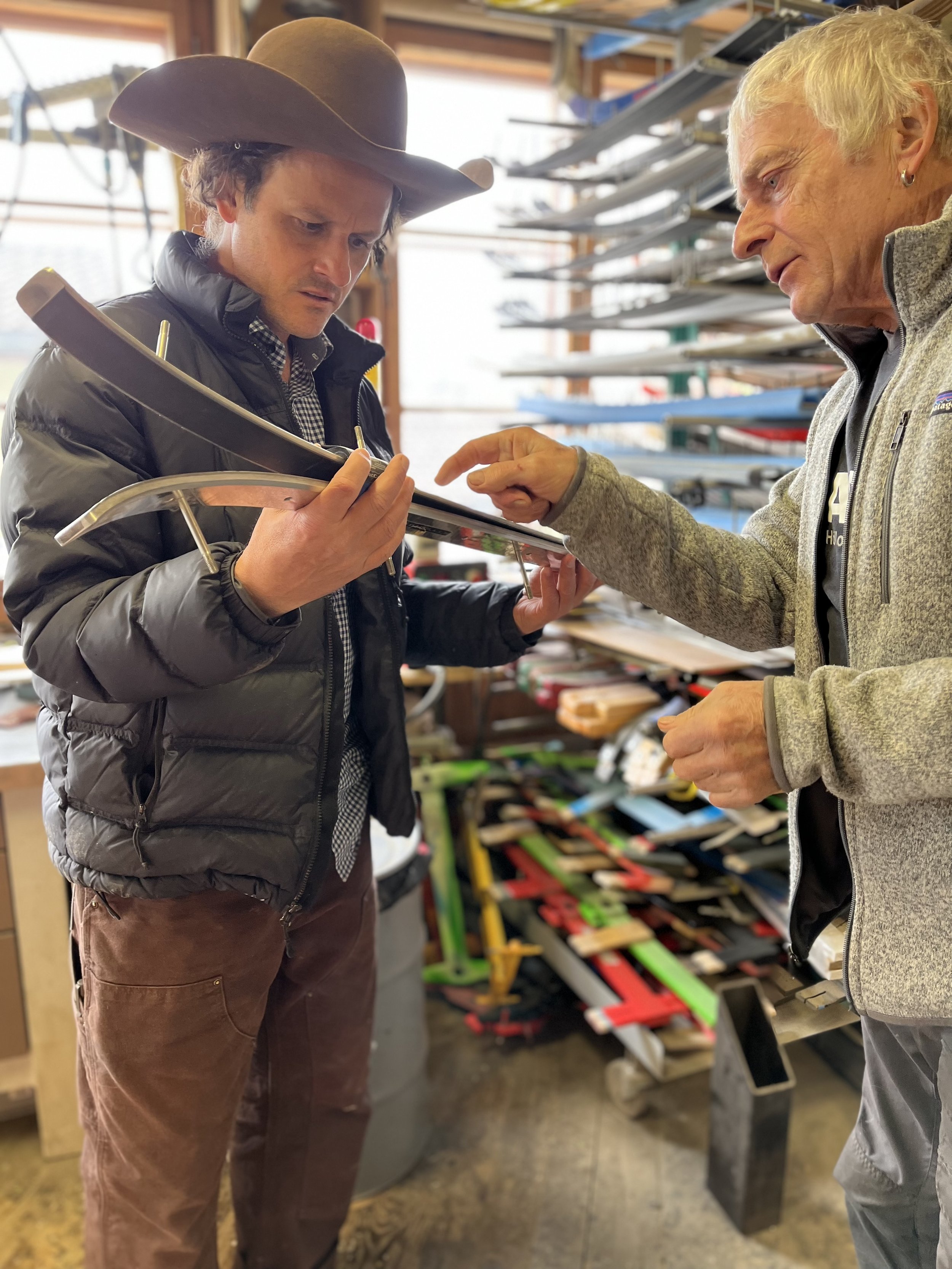
“Where did you grow up?”, I asked, figuring I could probably hit that place with a rock from where I was standing.
“In this room...”, he trailed off, sheepishly waving around at the machinery filling his woodshop.
The OG Geppetto.
The Lindauers have been documented on the same land for at least 500 years. Jo’s grandfather, a master carpenter, was already making sleds maybe a hundred years ago; nobody even knows where he learned the trade. Jo started in the shop with him, and his father (a ski-maker and Olympian), when he was four. You can’t fake that kind of craftsmanship or experience. Building on tradition, Jo has come to embody the Japanese philosophy of kaizen: the art of perpetual improvement.
“Where did you get that?”, Euros often ask.
“A man in Switzerland.”
“Haha. Of course. We don’t have those, like that, where I’m from.”
If Jo told me he was going into his back room -the one containing all the sleds, steampunk sculptures, DJ equipment, wizard furniture and fairy lamps- and that he was going to come back with a walking, talking wooden puppet - I would believe him.
Handmade.
Begins at the beginning: logs seasoning in Jo’s sawmill.
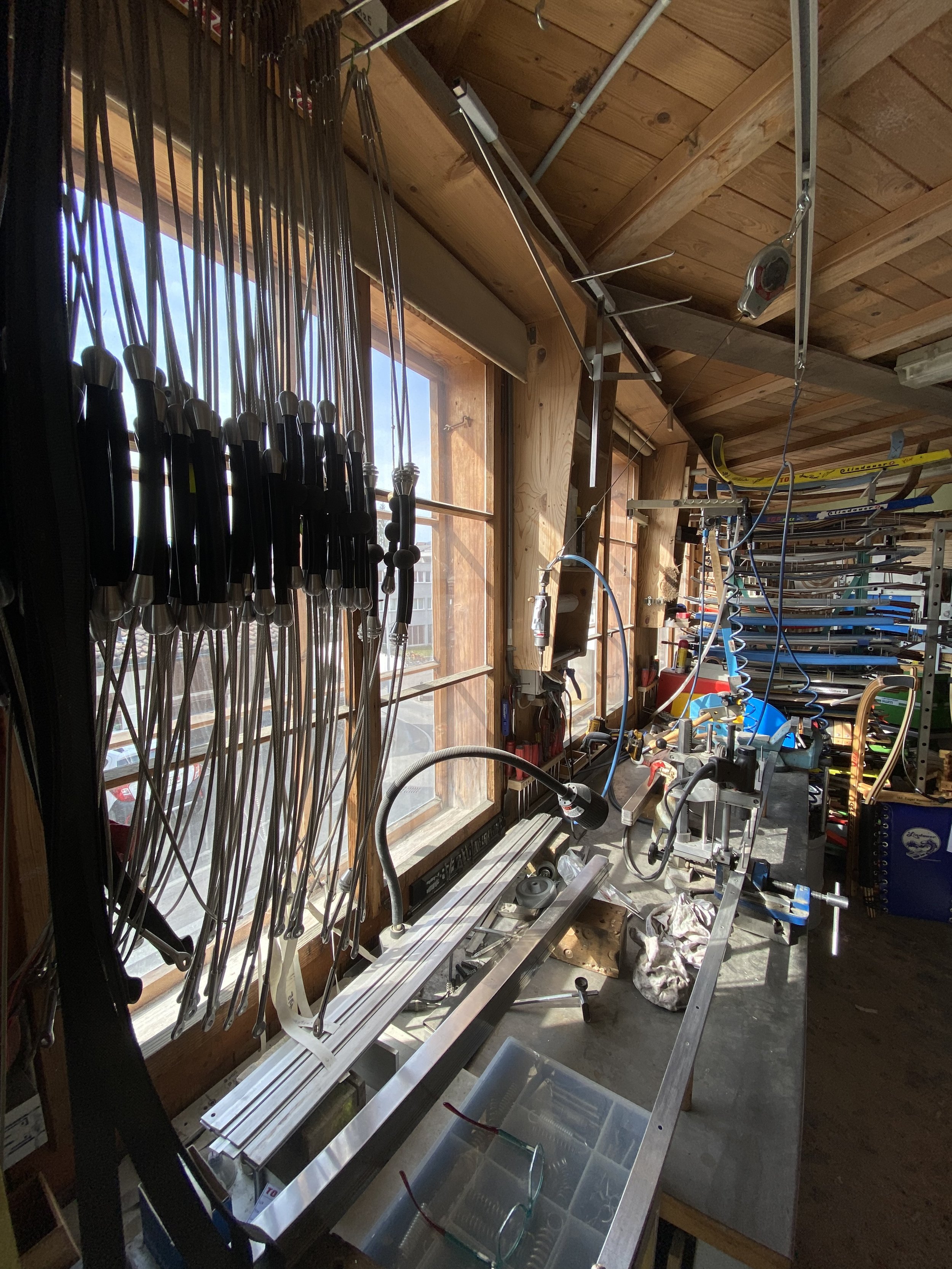
Lindauer sleds are easily defined: visionary.
-
A factory in Poland, working for the larger rodel manufacturers, stamps out as many sled parts per board foot as they can. A master carpenter, on the other hand, sacrifices much material in orienting the grain relative to the load of each individual piece. The different woods used in laminate all have different purposes; flex, strength, or esthetic.
-
I try to be enthusiastic about riding other sleds, but Jo makes it hard. Nobody else is making anything other than traditional metal runners. Honesty: I quit rodeling for several seasons, until I got my first Lindauer, because metal runners just weren’t cutting the mustard. All of the details are spot-on. Period.
-
If there were anything close to as good, I would own one.
-
Bling like you a’int ever seen.
